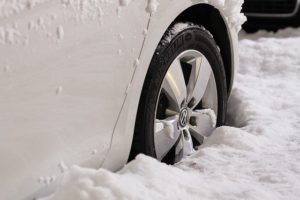One of the most vital maintenance areas in vehicles shared by The Intelligent Driver is windshield visibility. Poorly maintained windshields and windshield wipers can cause significant damage. Here are some windshield wipers and glass safety that is reasonable steps you can take to improve your driving experience and security. Windshield and wipers should be checked every six months for corrosion, damage, flexibility, and visible cracks and tears.
Check Windshield Wiper
 Ensure the wiper blades are touching the windshield correctly for the maximum reliability necessary for safe driving. Squeaking, scratches, and anything indicates that the wipers are not coming into contact with the glass. Wipers should be replaced every 1-2 years, depending on pressure and use. Worn wipers can permanently scratch the windshield. If you live in a region with a lot of rain and snow, you will most likely have to replace the wipers frequently.
Ensure the wiper blades are touching the windshield correctly for the maximum reliability necessary for safe driving. Squeaking, scratches, and anything indicates that the wipers are not coming into contact with the glass. Wipers should be replaced every 1-2 years, depending on pressure and use. Worn wipers can permanently scratch the windshield. If you live in a region with a lot of rain and snow, you will most likely have to replace the wipers frequently.
Clean Windshield Glass
One of the best methods you can remove was using relatively fine steel wool, removing almost everything from the glass and chrome. If you have slight scratches on the windshield, you can polish it with abrasive paste or a car cleaner, a mixture of excellent shine and abrasives. Never wash the windows in hot sunshine, never wash the windows if they are under a shade tree, or take the car to a garage. First, spray the windshield with Armor glass cleaner to remove dirt and soot from the windscreen using a standard microfiber cloth or cotton towels set. It will not scratch or damage the glass in any way and spray the windshield with glass cleaner, then rewash it and let it dry.
Take Care of the Windshield Wipers
If you do not clean, the windshield wipers will automatically activate the next time the car or truck is started. If the wipers are held in place by snow and ice, this can cause unnecessary wear and tear to your wiper motor. In some vehicles, the wiper motor is strong enough to break the wiper arms encapsulated in ice. The fluid interferes with the windshield and provides some lubrication to all these wipers, making them more durable. If you live in an area with severe frost, it is essential to compress the winter-resistant windshield wiper fluid to prevent the tank, hoses, and pump from freezing the spray nozzles.
A large tank of liquid can be quickly burned if you regularly drive on highways with heavy traffic and road sprays. Over time, dirt and debris will grow around the wiper blades and windshield, especially near the windshield’s bottom, where the wipers are located. Debris such as oil, salt, road tar, and other contaminants can cause the windscreen to glare, especially at traffic lights and oncoming traffic when dark, wet roads are forced to pass at night.
Use Antifreeze Liquid for Winter
 In winter, start the engine and turn the heating direction until the windshield snow starts to melt. If the weather remains icy with the forecast, raise the wiper blades to keep them away from the windshield. It can easily scratch the windshield and prolong the life of the wipers. If your vehicle has only a modest tank of liquid, consider carrying a container of fluid in your emergency kit. The antifreeze liquid is stored in convenient spray bottles and is ideal for brutal field hockey or ice hockey games and for cleaning difficult areas such as mirrors.
In winter, start the engine and turn the heating direction until the windshield snow starts to melt. If the weather remains icy with the forecast, raise the wiper blades to keep them away from the windshield. It can easily scratch the windshield and prolong the life of the wipers. If your vehicle has only a modest tank of liquid, consider carrying a container of fluid in your emergency kit. The antifreeze liquid is stored in convenient spray bottles and is ideal for brutal field hockey or ice hockey games and for cleaning difficult areas such as mirrors.
If the glass is already frozen, spray a little denatured alcohol/denatured alcohol on the glass, which can dissolve it immediately. Another way to reduce the ice on the windshield is to cut a small piece of cardboard large enough to cover the entire windshield, taking care to secure it so that it is not swept away overnight. Unfortunately, some people are known to pour hot water on their frozen windshields to speed up the thawing process.
